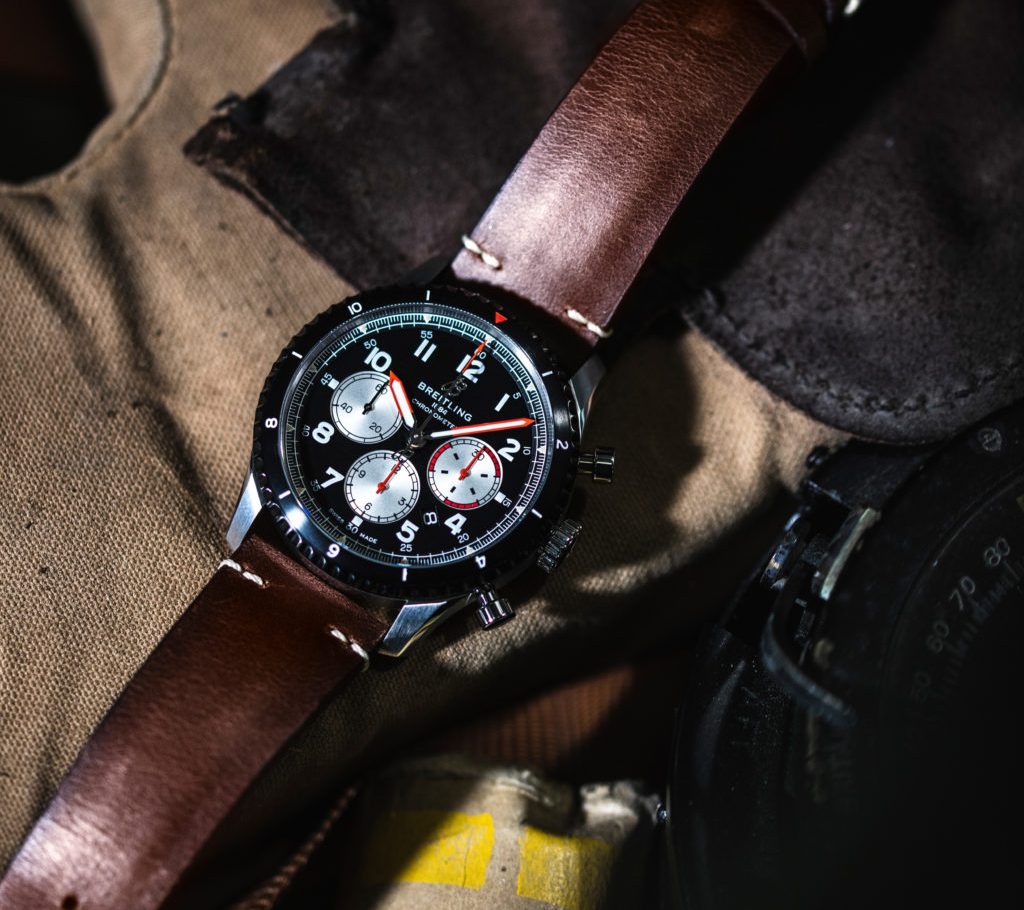BREITLING MOSQUITO

Britain’s forgotten WWII plane gets the thumbs up from Breitling.
Everyone has heard of the Spitfire fighter jet from World War II but what about the De Havilland Mosquito? Alistair Hodgson is the curator of the De Havilland Aircraft Museum in England and says, “Ask any one in the street to name three WW2 British aircraft and they say Hurricane, Spitfire and Lancaster, but the Mosquito was forgotten about. Some say that the Spitfire won the Battle of Britain, but the Mosquito won the war.”
Made by De Havilland between 1940 and 1950, the two-seater Mosquito was designed as a light bomber. But because of its speed, agility and its ability to fly high, it could also be used for photo reconnaissance and daring ground attack raids. It was one of the fastest aircraft in the world and flew 20mph faster than the Spitfire, which was equipped with the same engine.
“It was fast, reliable and robust,” explains Hodgson. “Geoffrey de Havilland knew there would be a shortage of aluminium during wartime and so made the Mosquito from a plywood and balsa wood composite. It was a fantastic piece of engineering by someone who was a pioneer and innovator.”
Despite reluctance from the British government to green light the project, production of the Mosquito – nicknamed the ‘wooden wonder’ – was signed off and moved to a secret factory at Salisbury Hall, a 16th century manor house where the first plane was designed and built in just 11 months. This was the moment when Geoffrey De Havilland’s genius struck,
“The masterstroke was to build the plane from readily available labour: furniture makers,” explains Hodgson. “Nobody wants new tables, chairs or wardrobes during wartime so the furniture industry was doing nothing. All of a sudden they found themselves right at the forefront of the war effort.
“In the 1930s the trend for curved Art Deco furniture meant that furniture makers were familiar with steaming and bending wood, which helped them make the Mosquito. Geoffrey De Havilland knew he had a winner and the Mosquito became a massive success,” he adds.
Then, this summer, Breitling came calling at Hodgson’s museum an hour north of London. Keen to make a new watch based on a WW2 plane, the brand took a tour of the museum and were immediately taken with the Mosquito. The matte black dial, red and white markings and subdials of the Aviator 8 Mosquito are lifted from the plane’s design.
“Working with Breitling has taken the De Havilland brand to a different stage and this watch marks a whole new chapter for the museum,” smiles Hodgson, who volunteered at the museum for 10 years before becoming its curator in 2017. “When I first saw the watch, I thought, ‘We’ve arrived’. It truly reminds of the plane, which proves Breitling have done a fantastic job.”








